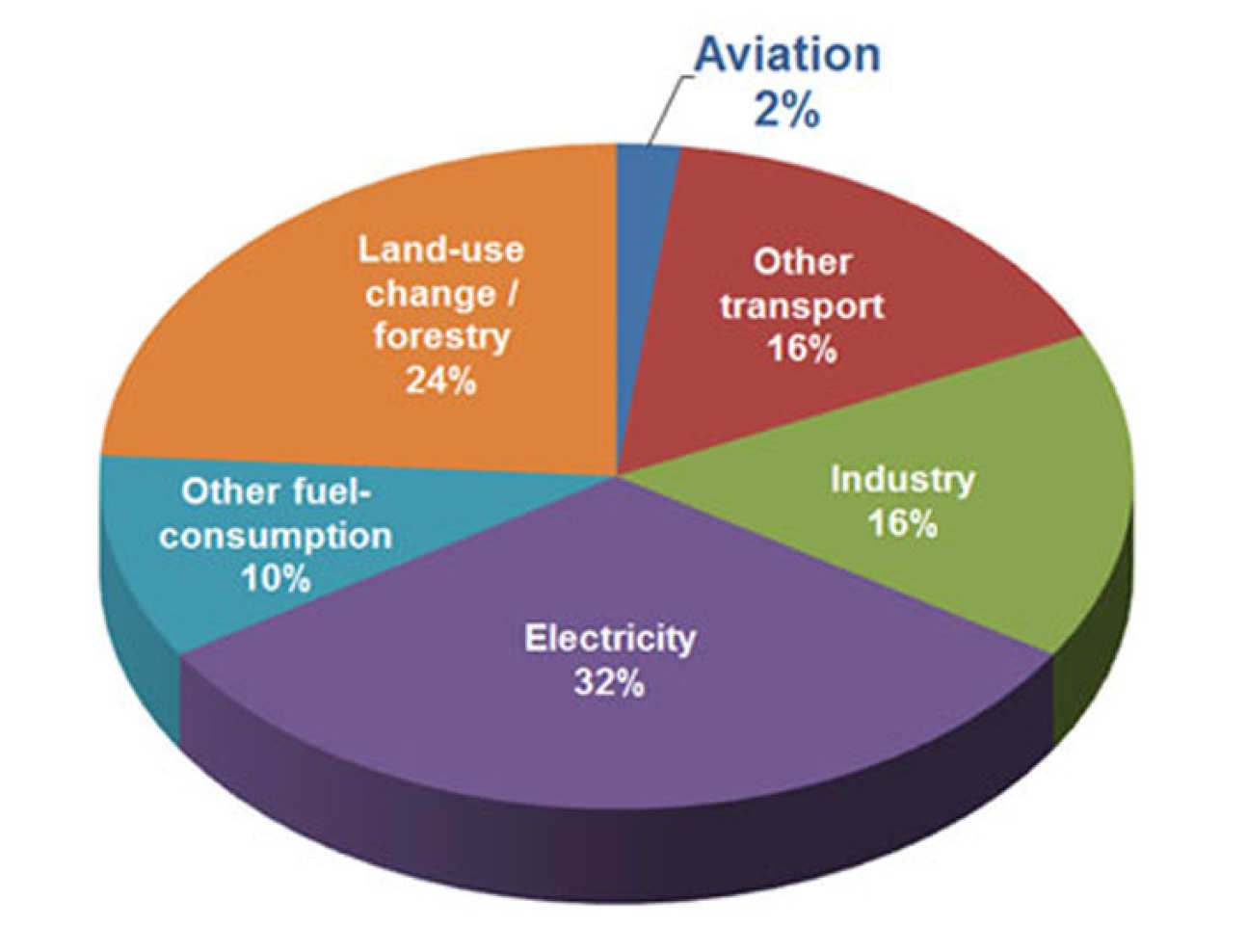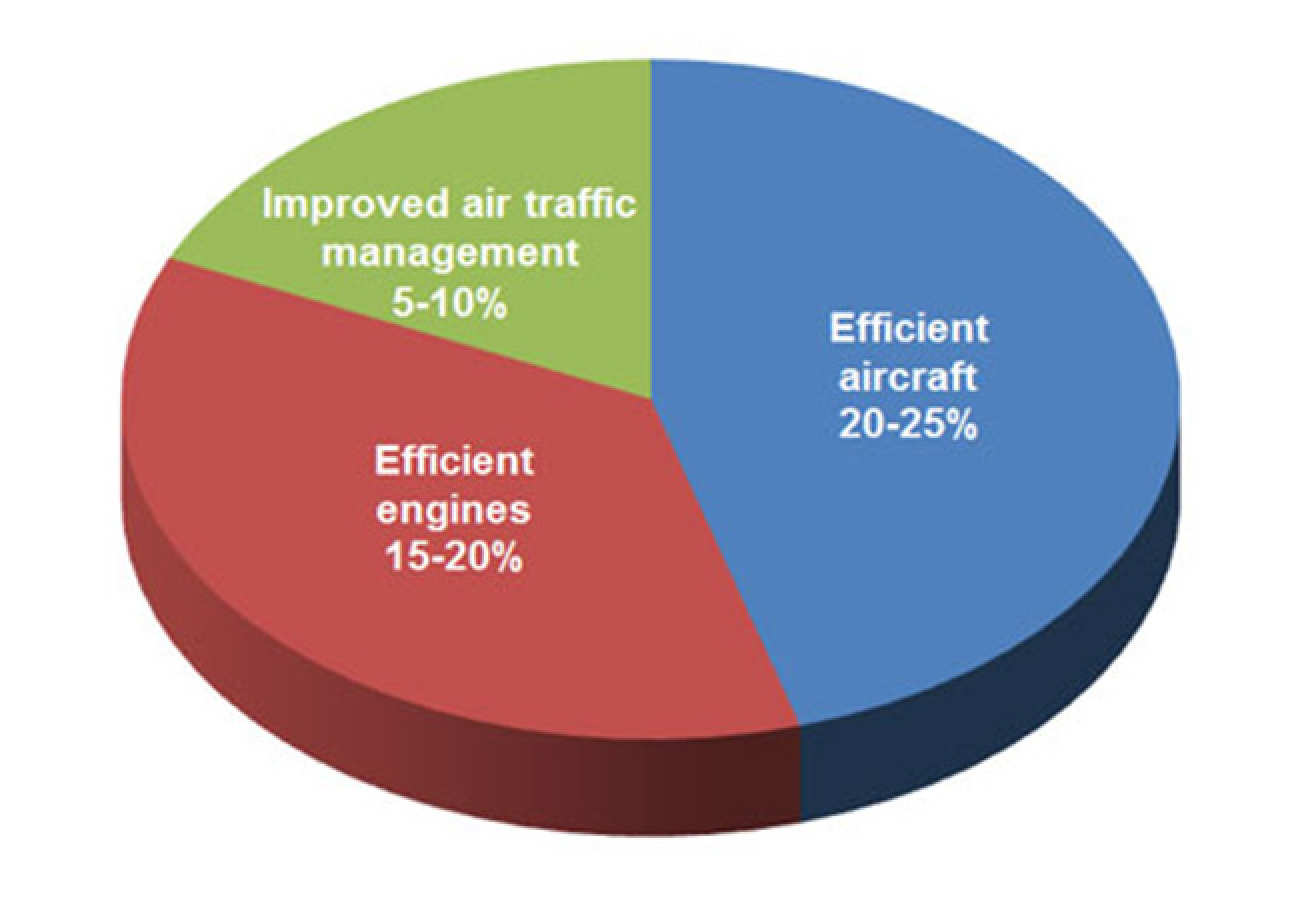Aviation currently accounts for 2-3% of man’s contribution to global warming. Air travel is predicted to increase by 4-5% each year over the next 20 years. Aviation will have to find ways to meet the growing demand for civil air transport whilst reducing its environmental impact, specifically to the level of carbon emission.
The International Air Transport Association vision is for carbon neutral growth by 2020, 50% absolute reduction in carbon emission by 2050 and zero-emission aircraft within 50 years.
Global CO2 emissions by sector
(source: 'Sustainable Aviation CO2 Roadmap', December 2008)

2020 targets
The aviation industry in Europe has long recognised this challenge. In 2001 the Advisory Council for Aeronautical Research in Europe (ACARE) established the following targets for new aircraft entering service in 2020 compared to those entering service in 2000:
- reduce fuel consumption and CO2 emissions by 50% per passenger kilometre
- reduce NOx emissions by 80%
- reduce perceived noise by 50%
(from ‘European Aeronautics: A Vision for 2020’, January 2001)
Meeting the ACARE targets
ACARE has identified the main contributors to achieving the above targets (Strategic Research Agenda 1, Volume 2,‘The Challenge of the Environment’, October 2002). The predicted contributions to the 50% CO2 emissions reduction target are shown below:

Beyond 2020
With the 2020 deadline ever closer and a typical civil aircraft development cycle of 10 - 15 years, the industry is now considering longer term objectives. IATA (International Air Transport Association) published these targets:
- a target to stabilise net CO2 emissions by 2020
- an aspirational goal to reduce net carbon emissions by 50% in 2050 compared to 2005
(from ‘A global approach to reducing aviation emissions’, IATA, 2009)
Future aviation industry targets will require a significant step change in the technologies of future aircraft as well as changes to Operations and Management Systems.
Contact
Green Aviation
Department of Aeronautics
Imperial College London
South Kensington Campus
London SW7 2AZ
General contact details:
Tel: +44 (0)20 7594 5063
greenaviation@imperial.ac.uk
Corporate Partnership Associate
Chris Lord
Tel: + 44 (0)20 7594 2024
c.lord@imperial.ac.uk